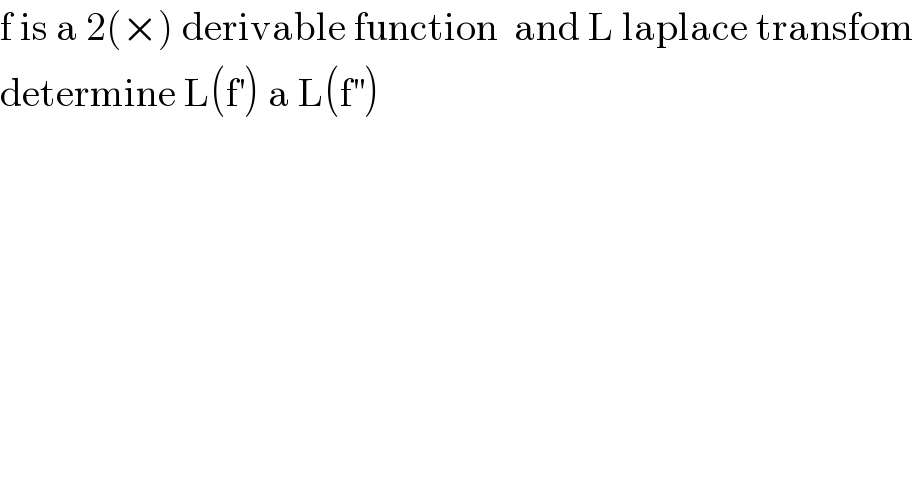
Question and Answers Forum
Question Number 94931 by mathmax by abdo last updated on 22/May/20

Answered by mathmax by abdo last updated on 22/May/20
![L(f^′ (t))(p) =∫_0 ^∞ f^′ (t)e^(−pt) dt and by parts =[f(t)e^(−pt) ]_0 ^∞ −∫_0 ^∞ f(t)(−p)e^(−pt) dt =−f(0) +p ∫_0 ^∞ f(t)e^(−pt) dt =pL(f)−f(0^+ ) ⇒L(f^′ ) =pL(f)−f(0^+ ) also L(f^(′′) ) =L((f^′ )^′ ) =p L(f^′ )−f^′ (0^+ ) =p(pL(f)−f(0^+ ))−f^′ (0^+ ) =p^2 L(f)−pf(0^+ )−f^′ (0^+ )](Q95018.png)
| ||
Question and Answers Forum | ||
Question Number 94931 by mathmax by abdo last updated on 22/May/20 | ||
 | ||
Answered by mathmax by abdo last updated on 22/May/20 | ||
![L(f^′ (t))(p) =∫_0 ^∞ f^′ (t)e^(−pt) dt and by parts =[f(t)e^(−pt) ]_0 ^∞ −∫_0 ^∞ f(t)(−p)e^(−pt) dt =−f(0) +p ∫_0 ^∞ f(t)e^(−pt) dt =pL(f)−f(0^+ ) ⇒L(f^′ ) =pL(f)−f(0^+ ) also L(f^(′′) ) =L((f^′ )^′ ) =p L(f^′ )−f^′ (0^+ ) =p(pL(f)−f(0^+ ))−f^′ (0^+ ) =p^2 L(f)−pf(0^+ )−f^′ (0^+ )](Q95018.png) | ||
| ||